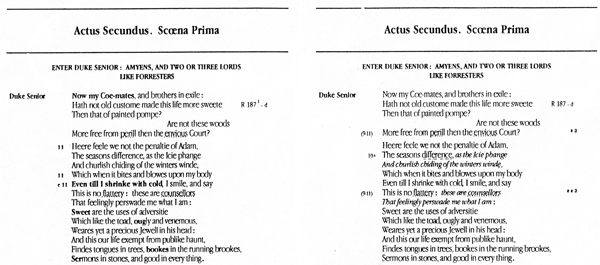
|
|
|
|
|
||
|
is the first production worldwide to explore such a text
So
with the verse spoken by Shakespeare's characters. When the
situation/verse is "normal" (given the scene's circumstances)
the pattern is given the poetic- academic term 'iambic pentameter'. In
human terms this best equates to five pairs of human heartbeats, the
strong stress coming on each alternate/even beat, as shown by the
capitalized syllables in Rosalind's demand, but
IF you DO reFUSE to MArrie ME Thankfully,
most Shakespeare characters don't remain calm for long. The
resultant awkwardness’s make for the most interesting parts of the play.
And when in chaos, characters' verse rhythms often break, showing an actor
exactly where the stress is at its highest: i.e. the heartbeat
momentarily breaks, as with the opening statement from the dying Adam, O
i DIE for FOOD (the
actor cannot speak heartbeat - 'o I die FOR food' - and make sense). An
obvious example - so, more important are the circumstantially less obvious
breaks, leading to the key acting questions "why? here?", as
with the opening to Jaques famous 'Seven Ages of Man' speech which cannot
really start, all
THE world's A stage The
fact that Jaques is rhythmically off-balance here is undeniable: but the
'why' is up to each actor-director-dramaturgical team to explore.
There are two stages: The
'COULD'S' are not accepted (yet) by all commentators - hence they are
shown in a separate section, highlighted by the italics (added for
illustrative purposes). These arise more from the line structure of
the original sixteenth-seventeenth century texts (stemming
especially from the punctuation), highlighting yet another lost
Shakespearean art, that of subtle debate.
|
||



